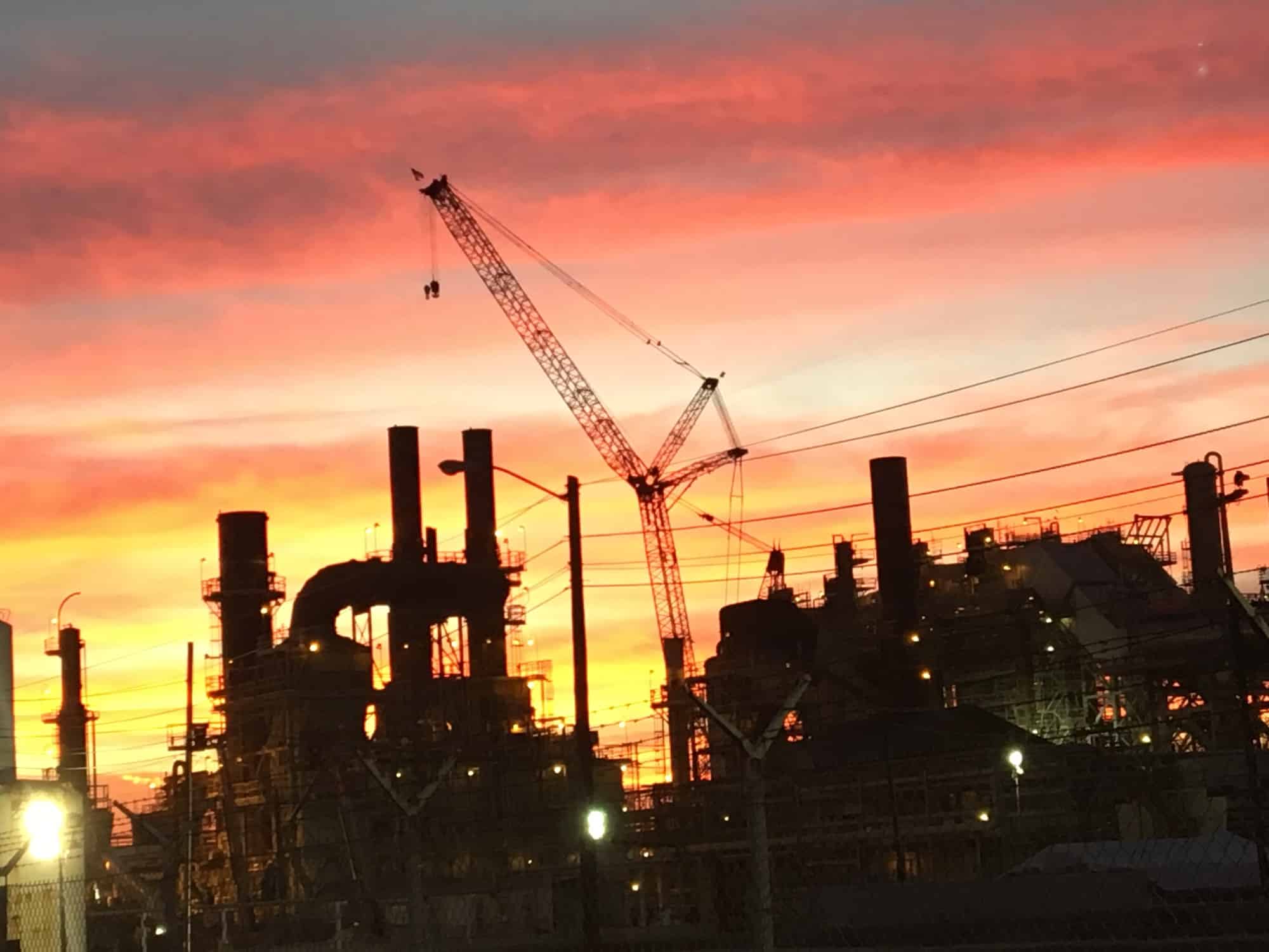Cranes play a vital role in the success of industrial construction projects and lifting operations across various industries. These are essential for moving heavy materials, equipment, and structures, enabling efficient and reliable lifting solutions.
Whether it’s constructing power plants or refineries, installing telecom infrastructure, or supporting renewable energy projects, cranes are the backbone of these industries.
In this blog, we will explore the significance of cranes in industrial construction and highlight the importance of having this robust lifting solution in various types of projects within this industry.
Industrial Construction Projects that Utilize Cranes
When it comes to industrial construction and lifting projects, there is one piece of machinery that stands tall as a symbol of power, precision, and efficiency – the crane.
These remarkable pieces of equipment have revolutionized the way we build and approach construction projects across various industries. From small-scale manufacturing facilities to immense refineries and power plants, cranes play a pivotal role in the successful completion of these projects.
As the demand for advanced infrastructure continues to grow, so does the need for efficient lifting solutions. Cranes have become the go-to choice for industrial construction projects, providing the necessary lifting and maneuvering capabilities to handle heavy loads with ease. Their versatility in reaching elevated areas, precise positioning, and ability to transport materials horizontally and vertically have made them an invaluable asset in the construction industry.
As we delve deeper into the specific applications of cranes across the industrial world, we will understand the remarkable impact these machines have on revolutionizing these industries.
Industrial Manufacturing
Industrial manufacturing projects involve the production of goods on a large scale, often requiring the movement of heavy materials, machinery, and components. Cranes play a crucial role in these projects by providing efficient and reliable lifting solutions across various stages of the manufacturing process including the tasks listed below:
- Material Handling – Cranes are used to lift and transport raw materials, such as steel beams, concrete panels, and machinery components, to the production line. With their high lifting capacity and reach, cranes can move heavy materials safely and quickly, ensuring a smooth flow of operations in the manufacturing facility.
- Assembly and Installation – During the assembly and installation stage, cranes are essential for lifting and positioning large and heavy machinery or equipment. Whether it’s installing turbines in a power plant, assembling heavy machinery in an automotive manufacturing facility, or erecting steel structures in a construction project, cranes provide the necessary lifting power and precision to handle these tasks efficiently.
Maintenance and Repair – Industrial manufacturing facilities require regular maintenance and repair work to ensure smooth operations. Cranes are used to lift and replace heavy components, carry out equipment inspections, and assist in repairs. Their maneuverability and lifting capabilities enable workers to access and work on hard-to-reach areas, enhancing the efficiency of maintenance and repair operations.
Examples of Industrial Manufacturing Projects that Benefit from Crane Usage:
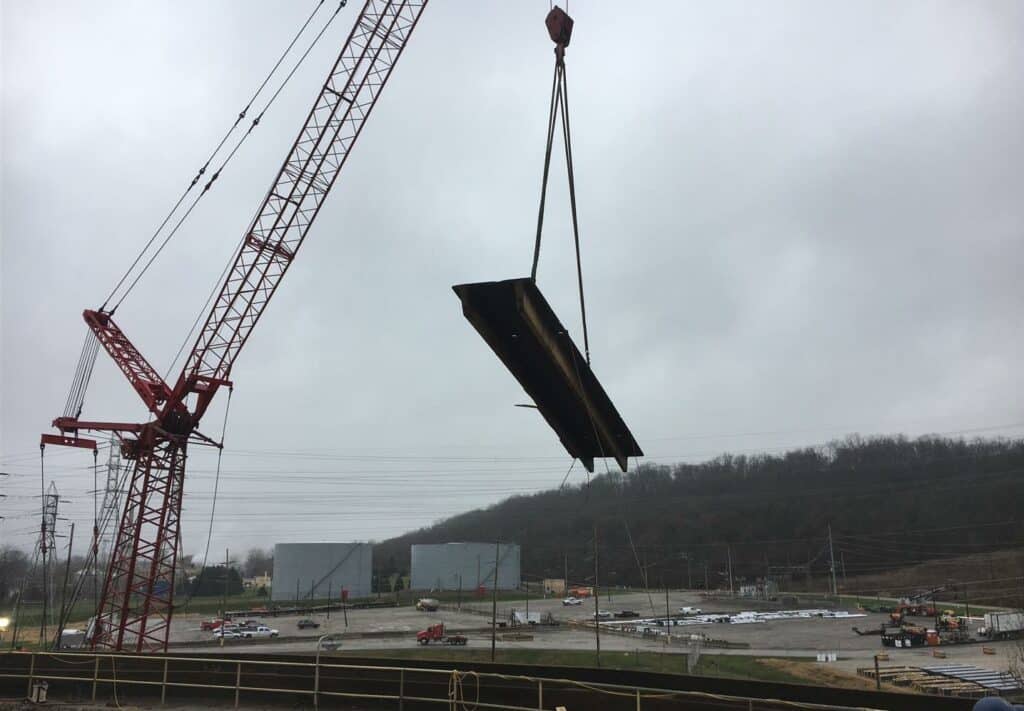
With their ability to handle heavy loads and navigate complex environments, cranes continue to revolutionize industrial manufacturing projects across different industries. Cranes contribute to the smooth workflow, increased productivity, and enhanced safety in these sectors in the following industrial manufacturing sectors:
Automotive Manufacturing
In the automotive industry, cranes are used for various purposes, such as moving heavy car bodies along the assembly line, installing engines and transmissions, and lifting and positioning robotic arms for automated tasks. Cranes play a crucial role in facilitating efficient production processes and ensuring smooth operations in automotive manufacturing plants.
Steel Production
Steel manufacturing involves handling and moving heavy steel coils, beams, and other components. Cranes are used to unload raw materials, transport them to different areas of the production facility, and stack finished products. The ability of cranes to lift and transport large volumes of steel quickly and safely is vital for maintaining a steady workflow in steel manufacturing plants.
Aerospace Manufacturing
In the aerospace industry, precision and safety are paramount. Cranes are used to handle delicate and intricate aircraft parts, such as wings, fuselage sections, and engines. They are also utilized for assembling and positioning these components during the construction of aircraft. Cranes with precise control and lifting capabilities ensure the accurate alignment and integration of aircraft parts, contributing to the quality and efficiency of aerospace manufacturing projects.
Pharmaceutical Manufacturing
Pharmaceutical manufacturing involves handling large and heavy equipment, such as mixing tanks, reactors, and packaging machinery. Cranes aid in the installation and positioning of these equipment, ensuring a smooth production process. They also assist in the movement of raw materials and finished products, optimizing material flow and facilitating efficient operations in pharmaceutical manufacturing facilities.
Food Processing
Cranes are utilized in the food processing industry for tasks such as lifting and moving heavy containers of ingredients, transporting large batches of processed food, and installing machinery for packaging and labeling. Efficient lifting solutions provided by cranes ensure the smooth and hygienic handling of materials, contributing to efficient and safe food processing operations.
Renewable Energy
Renewable energy projects, such as solar power, wind power, and hydroelectric power, play a significant role in transitioning to cleaner and more sustainable energy sources. These projects often involve the installation and maintenance of large-scale renewable energy systems, which require the use of heavy equipment, materials, and components. Cranes play an indispensable role with their lifting capacities, precision controls, and maneuverability enabling the transportation and placement of heavy infrastructure components, contributing to the overall effectiveness and success of renewable energy systems.
Here’s just a few reasons cranes are essential to renewable energy projects:
- Infrastructure Installation – Cranes are crucial for the installation of renewable energy infrastructure, such as solar panels, wind turbines, and hydroelectric equipment. These components are often large and bulky, requiring specialized lifting equipment to hoist them to considerable heights. Cranes with high lifting capacities and extended reach ensure the safe and precise placement of infrastructure components, supporting the efficient and timely completion of renewable energy projects.
- Component Transportation – Renewable energy projects involve the transportation of heavy and oversized components, such as rotor blades for wind turbines. Cranes are used to lift and transport these components from storage yards or assembly areas to the installation site. Their maneuverability and lifting capabilities enable the movement of these specialized parts, contributing to the smooth progression of renewable energy projects.
- Efficient Operations – Efficiency is paramount in renewable energy projects to ensure optimal energy production. Cranes support the efficient operation of these projects by reducing manual labor requirements and streamlining processes. With their high lifting capacities and precision controls, cranes enable faster and more accurate installation and maintenance activities. This efficiency translates to cost savings and improved project timelines, ultimately enhancing the overall effectiveness of renewable energy systems.
Highlighting the Various Types of Renewable Energy Projects that Require Crane Support
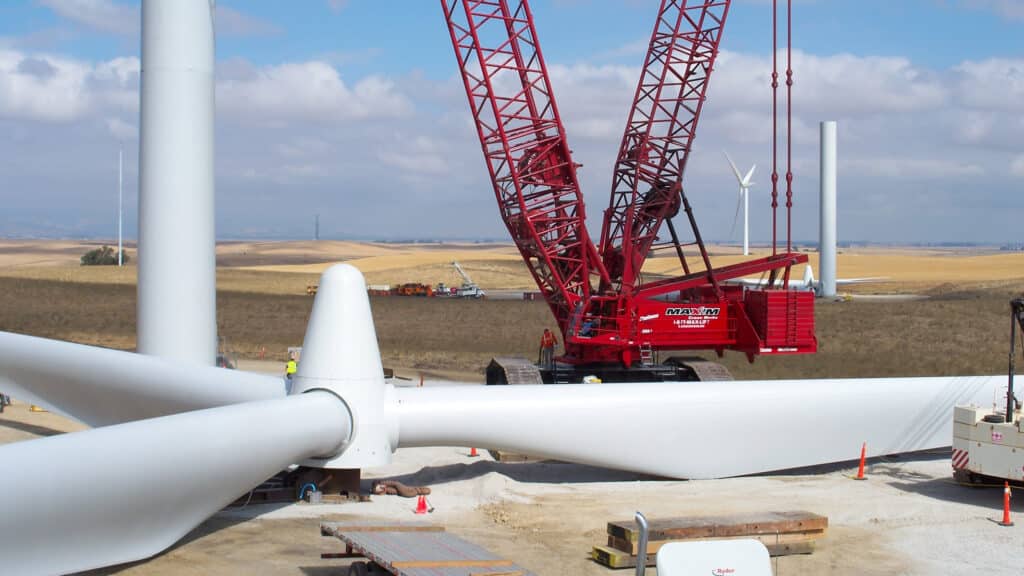
As the world continues to embrace renewable energy sources, cranes will continue to play a vital role in supporting the growth and sustainability of the renewable energy industry. Cranes contribute to the efficient and safe completion of projects such as these below:
Solar Power
In solar power projects, cranes are used for the installation of solar panels, especially in large-scale solar farms. Cranes lift and position these panels onto mounting structures, ensuring proper alignment and connectivity. They also support the transportation of heavy equipment, such as solar inverters and battery storage systems, contributing to the overall efficiency of solar power installations.
Wind Power
Cranes play a crucial role in the installation and maintenance of wind turbines, which are integral to wind power generation. They are utilized to lift and position tower sections, nacelles, and rotor blades, which can weigh several tons. Cranes with tall lifting heights and strong load capabilities are essential for erecting wind turbines at considerable heights and ensuring their proper alignment for optimal wind energy harvest.
Hydroelectric Power
Hydroelectric power projects often involve the construction of dams, water turbines, and penstocks. Cranes are utilized in lifting and placing heavy prefabricated elements, such as turbine runners and generators, into their designated locations. They also assist in the transportation of construction materials and equipment to various areas of the hydroelectric power site. With their lifting capabilities and maneuverability, cranes facilitate efficient and safe operations in hydroelectric power projects.
Geothermal Power
Geothermal power projects require the installation of geothermal power plants, which involve heavy equipment, such as drill rigs, heat exchangers, and turbines. Cranes are used to lift and position these components during the installation process. They ensure the accurate placement of these specialized components, contributing to the successful harnessing of geothermal energy.
Refineries and Petrochemical Plants
Refineries and petrochemical plants are complex facilities involved in processing crude oil and other raw materials into various petroleum products and chemicals. These industries require the movement and installation of heavy equipment, vessels, and structures, making cranes an essential component of their operations. They provide essential lifting solutions to meet the very unique and specific requirements of these industries.
Here’s just some ways cranes play a crucial role in refineries and petrochemical plants:
- Equipment Installation and Maintenance – Cranes are responsible for the installation and maintenance of crucial equipment in refineries and petrochemical plants. They are used to lift and position heavy machinery, such as reactors, distillation columns, heat exchangers, and storage tanks. The precise control and lifting capacity of cranes ensure that these equipment components are securely placed, minimizing the risk of damage during installation and facilitating efficient maintenance activities.
- Pipeline and Piping System Construction – The construction of pipelines and piping systems is a critical aspect of refineries and petrochemical plants. Cranes assist in lifting and placing large sections of pipes, valves, and fittings during their installation. This contribution ensures the proper alignment and integration of the piping infrastructure, maintaining the integrity of the plant’s operations and preventing any leaks or disruptions in the flow of chemicals and products.
- Heavy Component Transportation – Refineries and petrochemical plants often require the transportation of heavy components, such as large pressure vessels or condensers. Cranes are crucial for lifting and moving these components within the facility. Their lifting capacities and precise controls allow for the safe and accurate transportation of these heavy loads, ensuring their proper placement and minimizing the risk of accidents or damage.
Exploring Refinery and Petrochemical Plant Challenges
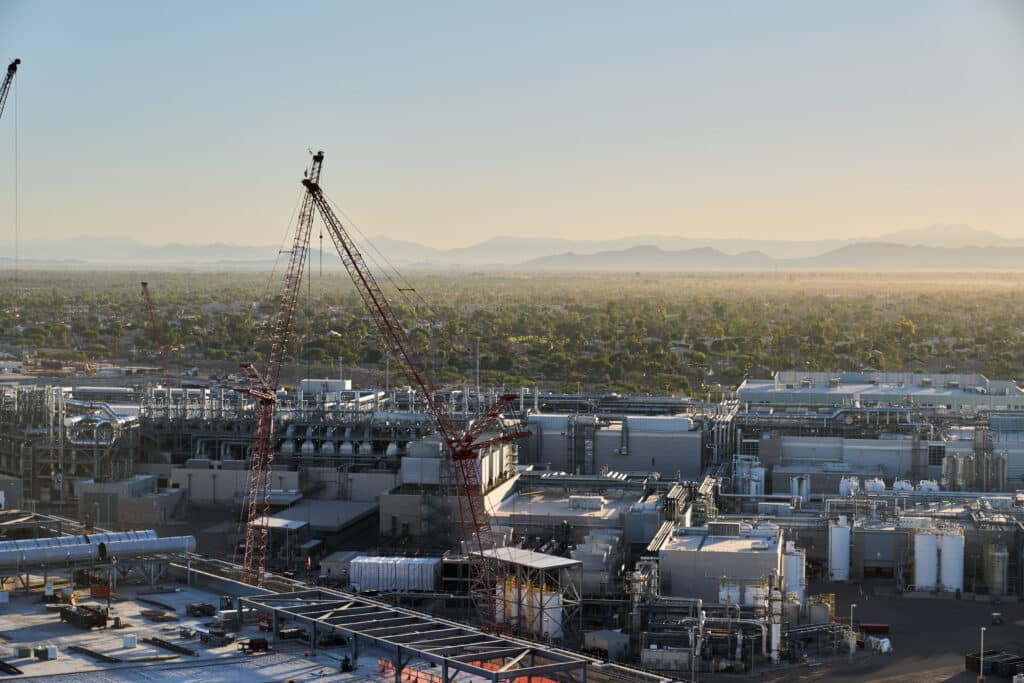
Overcoming challenges such as restricted space, hazardous environments, and the need for precision and heavy load capacity, cranes ensure efficient workflows and the integrity of operations in refineries and petrochemical plants. Their contribution to these industries is vital in supporting the production of petroleum products and chemicals that are essential to our everyday lives.
Restricted Space
Refineries and petrochemical plants are often constructed in compact spaces with limited maneuverability. Cranes must navigate tight spaces and obstacles while lifting heavy equipment or transporting components. The design and agility of cranes are crucial in overcoming these challenges and ensuring safe lifting operations within these confined areas.
Hazardous Environments
Due to the nature of their operations, refineries and petrochemical plants can have hazardous environments, including flammable or corrosive substances. Cranes operating in these facilities must adhere to strict safety regulations and be specifically designed to withstand these conditions. They may need additional features, such as explosion-proof mechanisms or anti-corrosive coatings, to ensure the safety of personnel and equipment.
Precision and Alignment
Precision is vital in the installation and maintenance of equipment and structures within refineries and petrochemical plants. Cranes must provide precise control to accurately position heavy components into their designated locations. Maintaining alignment is crucial for the efficient flow of materials and products, as well as for ensuring the integrity of systems in these industries.
Heavy Load Capacity
Refineries and petrochemical plants often deal with extremely heavy loads, such as large storage tanks or pressure vessels. Cranes used in these industries must have high lifting capacities to handle these heavy loads safely and efficiently. The ability to lift and transport these heavy components is crucial to maintaining productivity and minimizing downtime in these time-sensitive operations.
Power Plants
Power plants are critical infrastructure that generates electricity for various industries and communities. The construction and maintenance of power plants require heavy equipment, massive components, and precise installations. This is where cranes play a vital role in facilitating these operations. Here’s how cranes contribute to the success of power plant projects:
- Equipment Installation – Power plants consist of large-scale equipment and machinery which are incredibly heavy and require specialized lifting solutions. Cranes with high lifting capacities and precise controls are used to install this equipment into their designated positions, ensuring proper alignment and alignment for optimal performance.
- Maintenance and Repairs – Regular maintenance and occasional repairs are crucial to keep power plants operating efficiently. Cranes are utilized to lift and replace heavy parts during maintenance activities. They enable quick and safe access to elevated areas, allowing technicians to perform inspections, repairs, and replacements as needed.
- Construction of Cooling Towers – Cooling towers are fundamental components of power plants that aid in the dissipation of excess heat. Constructing these tall structures involves lifting and positioning large concrete panels, steel beams, and cooling tower internals. Cranes with their high lifting capacities and reach capabilities, are essential for the efficient assembly of cooling towers, ensuring the stability and structural integrity of these vital components.
Different Types of Power Plants that Rely on Crane Technology
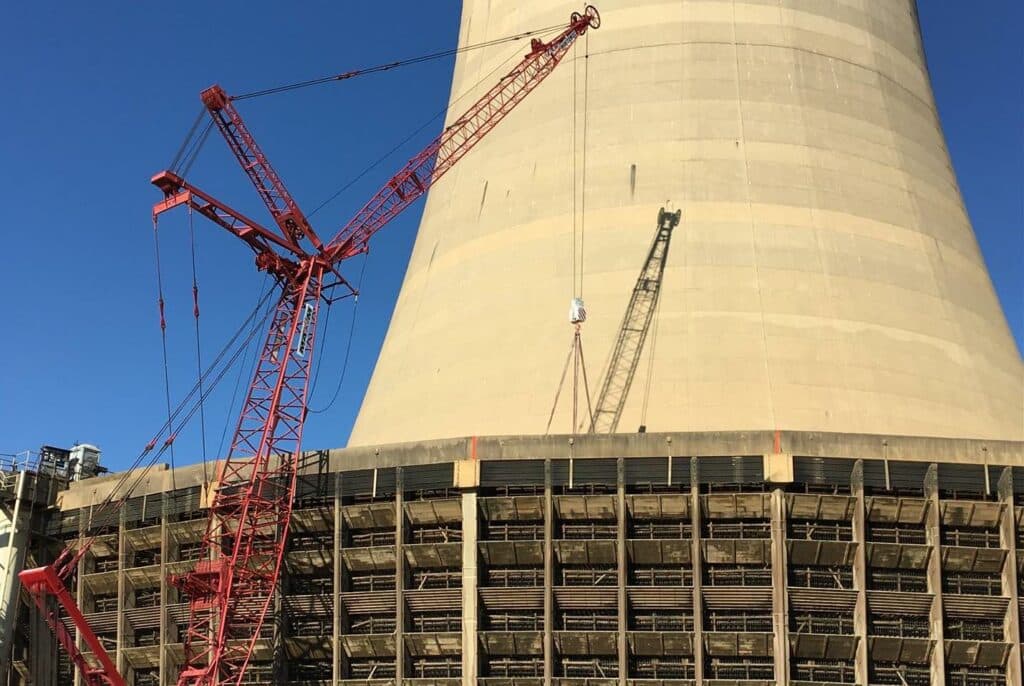
Through their lifting capacities, reach capabilities, and specialized features, cranes contribute significantly to the advancement of power generation, enabling the continuous supply of electricity to industries and communities worldwide. Here’s some different types of power plants that use cranes for lifting:
Fossil Fuel Power Plants
Fossil fuel power plants, such as coal-fired or natural gas power plants, rely on cranes for various operations. These cranes are used in the installation of heavy turbines, generators, and other components. Additionally, cranes play a role in the transportation of coal or natural gas to the interior of the plant for combustion. They are also utilized in the maintenance and repair of equipment that ensures the continuous and efficient generation of electricity from fossil fuels.
Nuclear Power Plants
Nuclear power plants require precise and careful handling of heavy nuclear reactors, steam generators, and other sensitive components. Cranes with specialized features like remote-controlled operations and radiation shielding are used to safely install and maintain these components. They are essential in the construction, maintenance, and decommissioning of nuclear power plants, ensuring the safe and efficient generation of nuclear energy.
Renewable Energy Power Plant
Renewable energy sources, such as wind and solar, are progressively being integrated into the power grid. Crane technology is essential in the construction and maintenance of renewable energy power plants. For wind power plants, cranes are used to install wind turbines and their components, including tower sections, nacelles, and rotor blades. Cranes with specialized attachments are also utilized for the maintenance and repair of these turbines, allowing technicians to access and service them at great heights. In solar power plants, cranes play a role in positioning and installing solar panels, as well as in the maintenance and repair of tracking systems used to optimize the panel’s exposure to sunlight.
Pulp, Paper, and Wood Manufacturing
Cranes play a critical role in the efficient operations of pulp, paper, and wood manufacturing facilities. These industries involve heavy-duty machinery, large equipment, and massive raw materials that require precise handling and movement. Cranes provide the necessary lifting power, mobility, and versatility to carry out various tasks in these sectors.
- Pulp and Paper Manufacturing – In this sector, cranes are used to transport heavy rolls of paper or pulp from one area to another. These rolls can weigh several tons and are difficult to move manually. By using cranes, companies can streamline their production processes, reduce manual labor, and enhance overall efficiency. Cranes also enable easy access to machinery and equipment for maintenance purposes, ensuring smooth operations.
- Wood Manufacturing – In wood manufacturing, cranes are utilized for several purposes. They are essential for loading and unloading logs from trucks or railcars, efficiently moving them to the processing area. Cranes are also used to stack finished wood products in storage yards, maximizing space utilization and making it easier to retrieve specific items when needed.
Specific Examples of Projects That Require Crane Usage
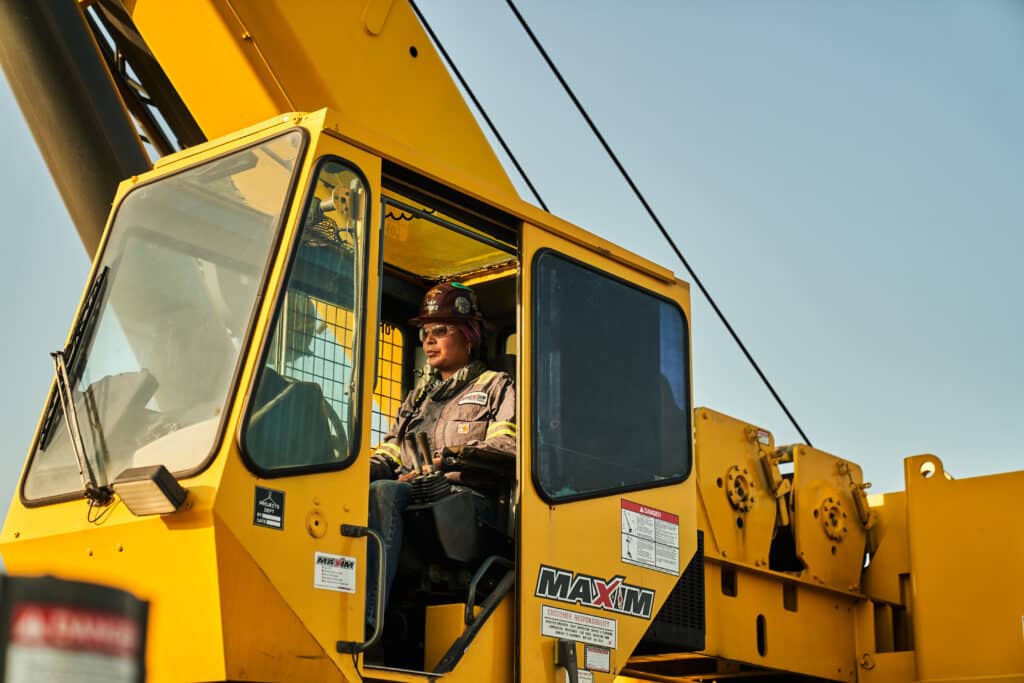
Whether it’s log handling in wood manufacturing or paper roll handling and storage in the paper industry, cranes are an indispensable tool, offering numerous benefits to these sectors.
Crane-assisted Log Handling
One specific project in the wood manufacturing industry where cranes are indispensable is log handling. In sawmills or wood processing plants, logs need to be transported from stacking areas to the processing machinery. Cranes with specialized attachments, such as grapples or log forks, can efficiently lift and move logs of various sizes and weights. This not only reduces manual labor but also speeds up the overall production process. With cranes, operators can carefully position logs for precise sawing or processing, resulting in higher-quality wood products.
Additionally, cranes allow for safer log handling operations, minimizing risks. They are designed with features like load monitoring systems and anti-sway technology, ensuring stable and controlled movements while transporting logs.
Paper Roll Handling
The paper manufacturing industry heavily relies on cranes for the handling and storage of massive rolls of paper. These rolls, weighing several tons and measuring several meters in width and diameter, need to be moved and stored efficiently. Cranes equipped with specialized lifting attachments, such as paper roll clamps or spreader bars, offer a safe and effective solution. They allow for the precise placement of paper rolls onto machines for various production processes while ensuring minimal damage to the delicate paper surface.
Paper Roll Storage
Cranes also play a crucial role in the storage of paper rolls. They can stack multiple rolls high in warehouses, maximizing vertical space utilization. By using cranes, companies can avoid manual handling of heavy paper rolls and decrease the risk of accidents or damage to the rolls. Additionally, efficient storage and retrieval of paper rolls contribute to better inventory management and reduced downtime during production.
Mining
Mining operations involve the extraction of valuable minerals and resources from the earth’s crust. These projects require heavy machinery, precise handling, and efficient processes.
Discussing the Diverse Applications of Cranes in the Mining Industry
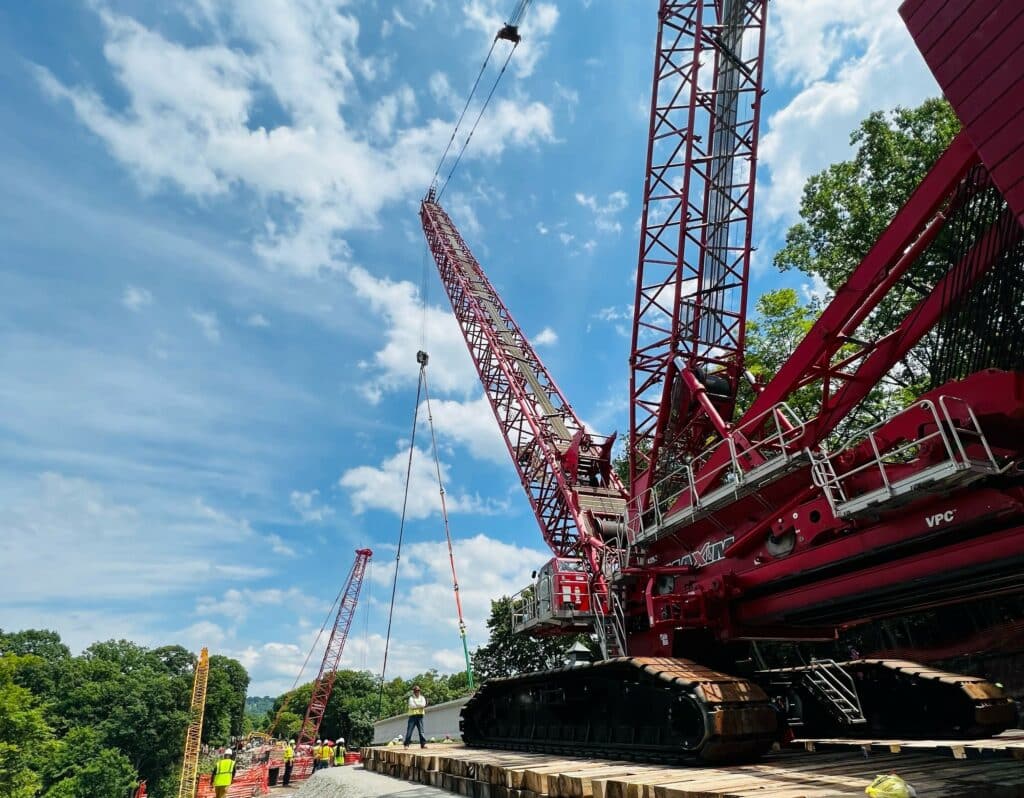
Cranes play a crucial role in the success of mining operations by providing reliable lifting solutions. They are essential for various stages of mining, from exploration and excavation to transportation and maintenance.
- Exploration and Site Preparation – Before mining operations can begin, extensive exploration and site preparation are required. Cranes are used to transport drilling equipment, geological tools, and materials to different locations on the mining site. They enable the smooth execution of exploration activities, such as core sampling and geological surveys, by providing the necessary lifting power.
- Excavation and Material Handling – Once the mining site is prepared, cranes are used in the excavation process. They are responsible for lifting heavy machinery, such as excavators and bulldozers, and transporting them to the desired areas. Cranes are also used to lift and move large quantities of mined materials, such as rocks, ores, and waste, from the mining pit to the processing or transport areas. By efficiently handling materials, cranes significantly increase productivity and reduce manual labor in the mining industry.
- Maintenance and Repairs – Mining equipment requires regular maintenance and repairs to ensure optimal efficiency and safety. Cranes are utilized for lifting and positioning heavy components, such as engines, gearboxes, and conveyor systems, during maintenance activities. Their robustness and lifting capabilities make them ideal for handling large and cumbersome mining equipment. By facilitating timely inspections and repairs, cranes contribute to minimizing downtime and maximizing operational efficiency.
- Transportation and Logistics – The mining industry heavily relies on transporting equipment, materials, and personnel within the mining site and beyond. Cranes are utilized to load and unload trucks, trailers, and railcars, enabling the efficient movement of resources to and from the mine. They also play a crucial role in setting up and dismantling temporary infrastructure, such as campsites or processing facilities, as mining operations progress.
- Safety and Risk Mitigation – Safety is paramount in the mining industry, given the potentially hazardous nature of the work environment. Cranes enhance safety by reducing the need for manual handling, minimizing the risk of accidents, and enhancing overall operational efficiency. They allow operators to lift and position heavy loads with precision, eliminating manual strain on workers.
Telecom
When we think of cranes, we often associate them with large-scale construction projects or heavy lifting in industries such as manufacturing or mining. However, cranes are not limited to traditional construction projects. There is a lesser known but crucial role that cranes play in the telecom sector. They support the installation and maintenance of crucial infrastructure. Their versatility and efficiency make them an invaluable asset in the ever-evolving world of communication technology.
Telecom infrastructure, including cell towers and communication systems, requires specialized equipment for installation and maintenance. This is where cranes come in, providing the necessary lifting power and efficiency for telecom projects.
How Cranes are Utilized in the Installation and Maintenance of Telecom Infrastructure
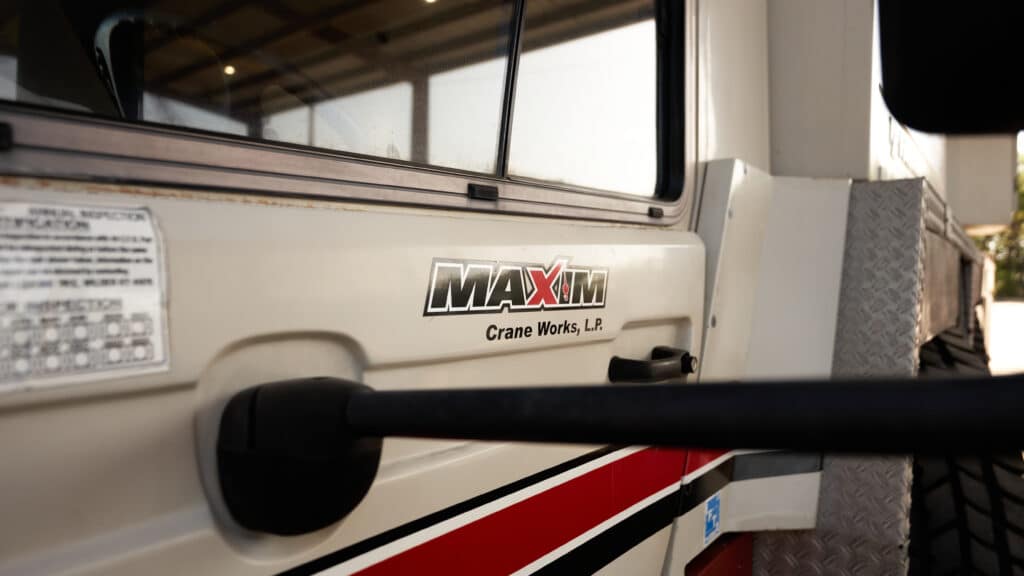
- Installation of Cell Towers – Cell towers are the backbone of our modern communication networks. Constructing and installing these towers requires precision and careful planning. Cranes are essential in this process, as they provide the necessary lifting capacity to raise heavy tower sections to their desired heights. They efficiently and safely lift antennas, communication equipment, and other components to be installed on the towers.
- Maintenance of Telecom Infrastructure – Like any infrastructure, telecom systems require regular maintenance to ensure optimal performance and connectivity. Cranes are used for various maintenance tasks, including:
- Antenna Installation and Replacement – As technology advances, telecom companies often need to upgrade or replace antennas on existing towers. Cranes are utilized to lift and position these antennas accurately, ensuring they are securely installed and aligned for optimum signal transmission.
- Equipment Upgrades and Replacement – Telecom equipment, such as transmitters or receivers, may need to be upgraded or replaced. Cranes play a crucial role in safely removing the old equipment and installing new ones, minimizing downtime and disruption to communication services.
- Tower Inspections and Repairs – Regular inspections are conducted to identify any structural issues or damage to cell towers. Cranes are utilized to provide access for technicians to inspect and repair high-reaching sections of the tower. They enable workers to reach elevated areas safely and efficiently.
- Cable and Wire Management – Cranes assist in the installation and maintenance of cables and wires that connect the telecom infrastructure. They can lift heavy reels of cable and wires to maneuver them into place, ensuring proper connectivity and signal transmission.
Maxim Crane—Your Industrial Crane Rental Solution
Throughout this blog, we have explored the significant role that cranes play in industrial construction and lifting projects. They provide the necessary lifting capacity, precision, and efficiency to handle heavy loads and maneuver them into place safely.
Cranes have become an indispensable tool in these industries, enabling the completion of complex projects within strict timeframes and budgets.
Maxim Crane understands the unique requirements of industrial construction and lifting projects, providing a wide range of crane options to suit different load capacities and project specifications. Their fleet of modern cranes, combined with their team of skilled operators and technicians, ensures that projects are executed with utmost efficiency, and professionalism.
So, if you are embarking on an industrial construction project and require reliable, high-quality cranes, look no further than Maxim Crane. Their dedication to excellence and their extensive range of crane rental services make them the ideal choice to elevate your construction project to new heights.


